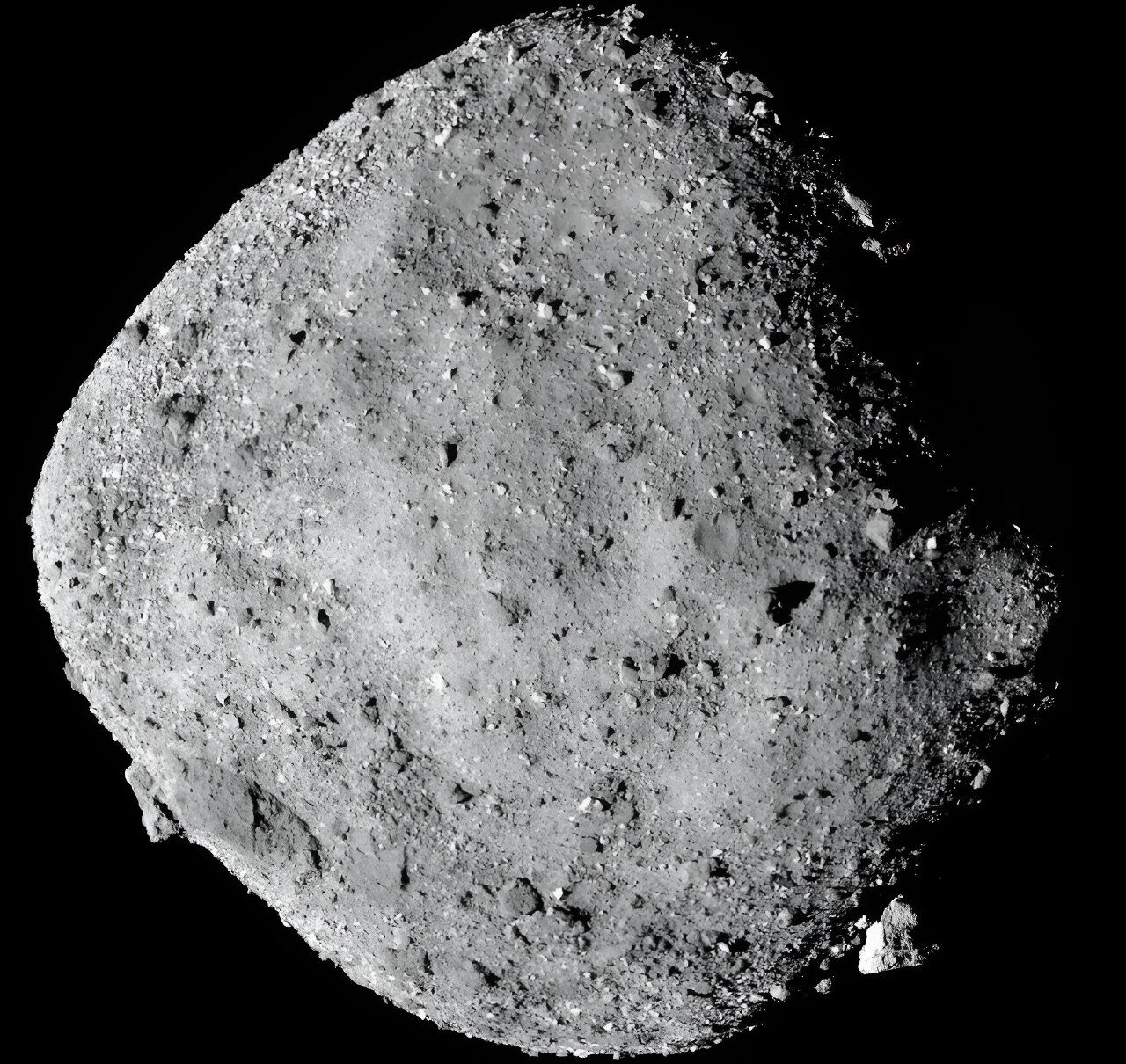Follow us on Google News (click on ☆)
Analyses conducted on Bennu's samples show an impressive diversity of organic and mineral compounds. These elements, essential for life, suggest that conditions conducive to its emergence were widespread in the early Solar System.

This image, taken by NASA's Osiris-Rex probe in December 2018, shows the asteroid Bennu.
The ingredients of life in space
Scientists have identified 14 of the 20 amino acids used by terrestrial life, as well as the five nucleic acid bases that make up DNA and RNA. These molecules, although not alive, indicate that the building blocks of life can form in space.
The presence of ammonia and saline minerals, such as halite, reinforces the idea of an environment rich in chemical reactions. These conditions would have allowed the formation of complex molecules essential for the emergence of life.
A watery past revealed
The samples contain minerals formed by the evaporation of saltwater, such as sodium carbonate and sylvite. These discoveries suggest that Bennu's parent body harbored pockets of liquid water billions of years ago.
These brines, similar to those observed in dried-up terrestrial lakes, could have served as a chemical "soup." They offer a glimpse into environments where organic molecules could interact and become more complex.
A window into the early Solar System
Bennu, a B-type asteroid, is considered a relic of the early Solar System. Its samples, preserved from any terrestrial contamination, allow the study of intact materials dating back more than 4.5 billion years.
These analyses confirm that asteroids may have played a key role in delivering water and organic molecules to early Earth. They also open perspectives for the search for life on other celestial bodies, such as Enceladus or Ceres.
Unanswered questions
Bennu's samples contain amino acids, but they are present in two distinct forms, known as "left-handed" and "right-handed." On Earth, life almost exclusively uses "left-handed" amino acids. This difference raises a major question: why did terrestrial life favor only one form?
The discovery of an equal mixture of both forms on Bennu suggests that amino acids were initially balanced in space. The mechanisms that led to the predominance of "left-handed" forms on Earth remain poorly understood. This mystery opens new avenues for exploring the origins of life and its possible variations elsewhere in the Universe.
To go further: what is a nucleic acid base?
Nucleic acid bases are essential molecules for the structure of DNA and RNA, the carriers of genetic information. They play a key role in storing and transmitting the instructions necessary for the functioning of living organisms.
There are four main nucleic acid bases: adenine, thymine, cytosine, and guanine, with uracil as an additional one. These molecules pair up to form the "rungs" of the DNA or RNA ladder, enabling gene replication and expression.
Bennu's samples contain all five nucleic acid bases, confirming that these fundamental elements of life exist in space. This discovery suggests that asteroids may have brought these molecules to Earth billions of years ago.
The presence of nucleic acid bases on Bennu opens perspectives for understanding how the first forms of life could have emerged. It also reinforces the idea that the ingredients of life are widespread in the Universe.